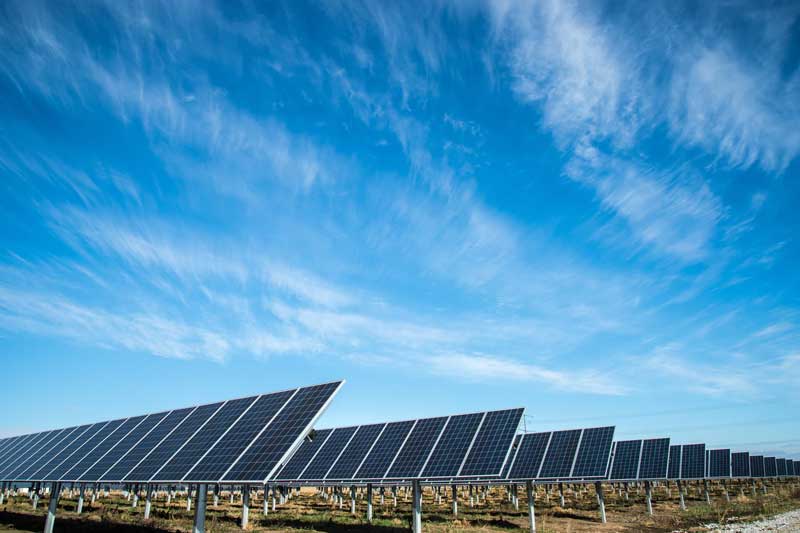Italy misses the solar thermodynamic train
For months now, the debate about alternative energy sources has become mainstream. The gradual abandonment of fossil fuels and the progressive exploitation of renewable energy sources is what is needed to combat climate change and the consumption of natural resources. An example is solar thermodynamics.
The news that only a few days ago the journalist Jacopo Giliberto reported in Il Sole 24 Ore is that due to a deaf bureaucracy, the usual “no” committees and a political class always too prepared to deal with problems, the trade association, Anest, has decided to dissolve it.
“The solar thermodynamic industrial sector in Italy died in infancy, without having managed to build a single power plant, killed as a child by politicians thirsty for consensus, by nimby committees of the no-to-everything, by corrupt public officials, by contradictory and belated regulations, by energy, climatic and environmental plans full of verbs conjugated in the conditional way of the hypothetical period of unreality“, writes Jacopo Giliberto in Il Sole 24 Ore.
Thus, MP Rossella Muroni initiated a parliamentary question. On his blog he writes: “We are talking about a clean, efficient and promising technology: concentrated solar power. An Italian invention that is exploited abroad, while in Italy the company that industrialized the patent is ready to move to China”.

But what is a solar thermodynamic system and how does it work?
In energy engineering, a thermodynamic solar power plant, also known as a concentrating solar power plant, or solar thermoelectric power plant, is a type of power plant that exploits, as a primary energy source, solar radiation, accumulating it in the form of heat by means of solar concentration techniques, to convert it, through a steam turbine, obtaining an electricity production.
Unlike common solar thermal panels for the generation of hot water for domestic purposes, this type of system generates medium and high temperatures, allowing it to be used in industrial applications such as electricity generation and/or as heat for industrial processes.
The great revolution compared to photovoltaics is the possibility of producing electricity even with overcast skies thanks to the possibility of heat storage in special tanks, at least partially remedying the physical limits of continuity/intermittency imposed by this type of energy source.
An invention born of Italian genius
Unfortunately, few people know that this technology is the result of the research of Carlo Rubbia, Nobel Prize for Physics in 1984, brilliant mind at CERN in Geneva, former director of Enea and Senator for life since 2013. The great scientist relied on “his” solar energy as an immediately available solution.

Rubbia started from a simple observation: a square meter of mirrors costs much less than a square meter of photovoltaic panels. With an average solar radiation of about 1,000 W/m2, like the Italian one, the thermodynamic efficiency would be very high.
As Lifegate recounts, “after designing the pilot plant at Priolo, in Sicily, some misunderstandings, problems and frictions led the scientist from Gorizia to leave the presidency of Enea and migrate to Spain, to Ciemat (the Spanish Aeneas). In just a few months, the rectilinear structure of the salt heating plant was built in Almeria – where two traditional concentrated solar power plants are already in operation. The first of a series of winds.” And this is how Spain can enjoy a technology made in Italy that Italy has “rejected”. Suffice it to say that between January and May 2019, Spanish solar thermodynamic produced 2,026 GWh, marking a +8% compared to the same period of the previous year.
It is a technology that is the envy of the world and has become a flagship experience of
ENEA
, the National Agency for New Technologies, Energy and Economic Development, an Italian public research body that operates in the fields of energy, the environment and new technologies in support of competitiveness and sustainable development policies, supervised by the Ministry of Economic Development. “An Italian invention – declares Rossella Muroni (LeU) – that they exploit abroad, while in Italy the company that industrialized the patent is ready to move to China”.
Yes, that would be true, China intends to reach 5000 megawatts in the next five years. And Giliberto writes in the newspaper Sole 24 Ore: “France is thinking about small-scale plants. Morocco and South Africa work there. But also Australia, Mexico, India and Egypt.”
Thus, Muroni appeals to Conte and Patuanelli “because we cannot afford to miss the train of solar thermodynamics, but we need urgent government intervention to unblock one of the most important sectors of clean sources”.
